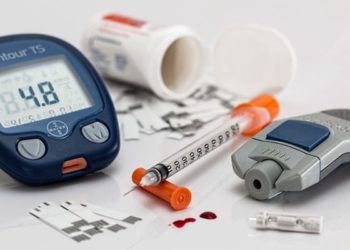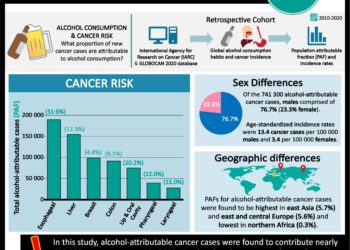Restrictive state alcohol policies may reduce alcohol-related crash fatalities
1. Increasingly restrictive state alcohol policies were associated with reduced odds that a crash fatality was alcohol related, both when blood alcohol levels were above and below the legal limit for driving in the USA (0.08%).
2. Both driving and consumption-oriented policies were independently protective against alcohol-related crash fatalities.
Evidence Rating Level: 3 (Average)
Study Rundown: Motor vehicle crashes (MVC) are a leading cause of mortality of which approximately 30% are alcohol related. It is important to study how we can reduce the influence of alcohol on MVC in order to reduce this cause of mortality. This repeated cross-sectional study aimed to examine the association between the restrictiveness of state alcohol policy environments and the likelihood of alcohol involvement among those dying in MVCs in the USA.
A 10% increase in the restrictiveness of a state’s alcohol policy environment was associated with a 10% reduced odds that a crash fatality was alcohol related. More restrictive policies also had protective associations with alcohol involvement among crash fatalities in people with blood alcohol concentrations (BACs) greater than 0.00% to less than 0.08% (the legal limit). Both consumption and driving-oriented policies were independently protective for alcohol-related crash fatalities. Strengths of this study include its large sample size across many states in the USA however it is a cross-sectional study and thus further controlled studies would be ideal in determining causation.
Click to read the study, published in JAMA Internal Medicine
Relevant Reading: Alcohol policies and impaired driving in the United States: Effects of driving- vs. drinking-oriented policies
In-Depth [cross-sectional]: This repeated cross-sectional study was conducted using data from the Fatality Analysis Reporting System to identify MVC fatalities in adults 21 years and older from 2000 to 2015 and compare them to state alcohol policies from 1999 to 2014 that were operationalized using the Alcohol Policy Scale (APS) – an internally developed scale that assessed the implementation and efficacy of 29 alcohol policies in all US states. This study also examined independent associations of mutually exclusive subgroups of policies including consumption-oriented vs. driving-oriented. The outcome of interest was odds that a crash fatality was alcohol related (fatality stemmed from a crash where >= driver had a BAC of >= 0.08%). The study used alternating logistic regression models and generalizing estimating equations to account for clustering of multiple deaths within a crash.
From 2000 to 2015 there were 505 614 adult MVC fatalities of which 35.4% were alcohol related. For each 10% increase in APS score (equating to a more restrictive state alcohol policy) there was an associated reduced individual-level odds of alcohol involvement (adjusted OR [aOR] 0.90; 95% CI 0.89-0.91). Increasingly restrictive polices also had protective associations with alcohol involvement in crash fatalities with BACs greater than 0.00% to less than 0.08%. Both driving and consumption-oriented policies were independently associated with reduced odds of alcohol-related crash fatalities (aOR 0.94; 95% CI 0.94-0.95 and aOR 0.97; 95% CI 0.96-0.98 respectively).
Image: CC/Wiki
©2018 2 Minute Medicine, Inc. All rights reserved. No works may be reproduced without expressed written consent from 2 Minute Medicine, Inc. Inquire about licensing here. No article should be construed as medical advice and is not intended as such by the authors or by 2 Minute Medicine, Inc.







